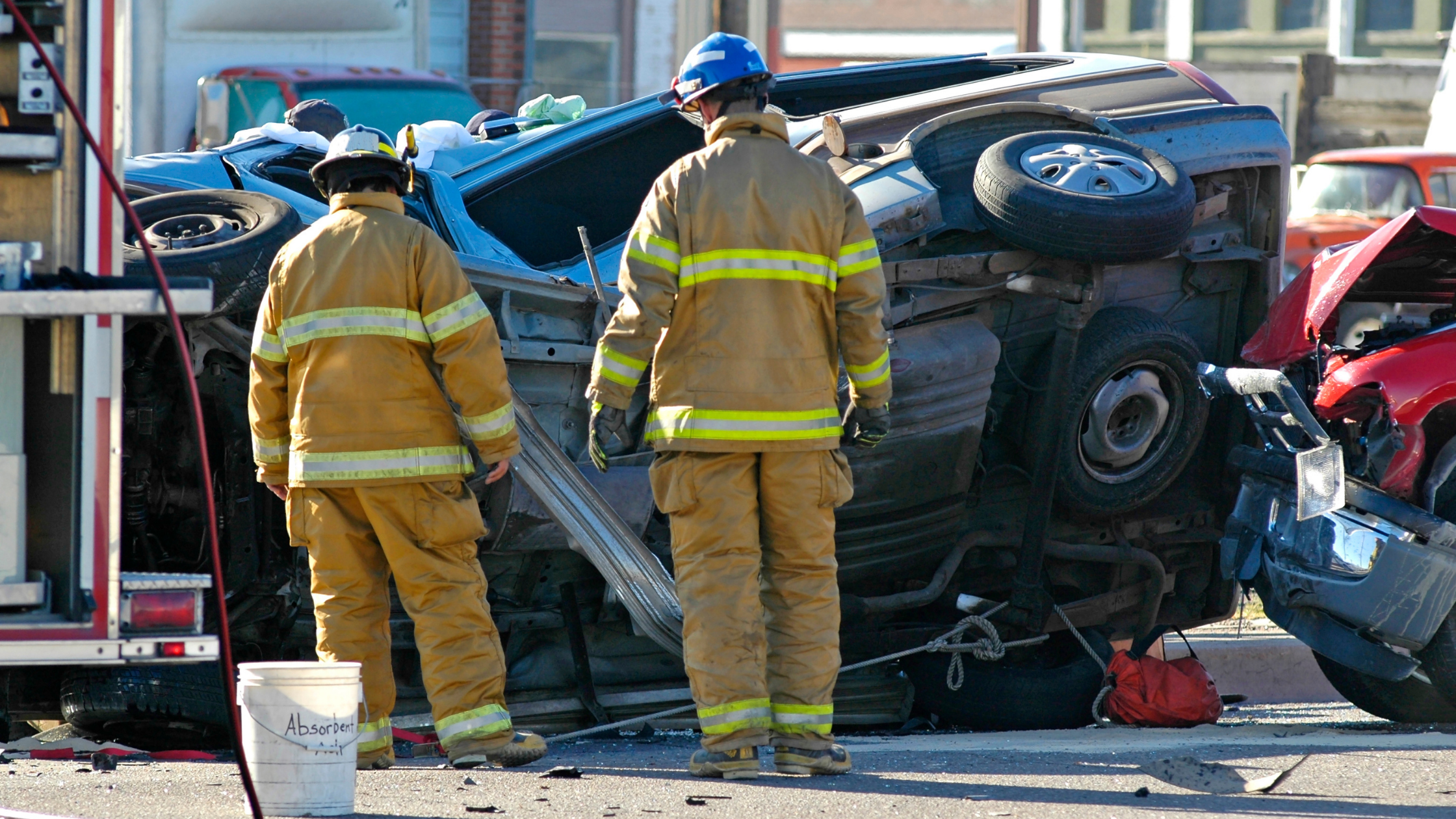Violent Car Accidents Increase During and After Pandemic, Here’s What You Need to Know
Among the many negative impacts that America experienced throughout the pandemic, one we didn’t expect to see was a significant increase in violent car crashes.
Driving has now become one of the most dangerous activities that Americans do every day, making driver safety even more of a priority.
Do you know anyone who has been injured in a car crash in the last 12 months? The answer is most likely yes.
Statistically, cars cause about as many deaths as guns and severely injure millions of drivers, passengers, and pedestrians every year. We have seen a significant increase in violent car crashes in 2019, 2020, and 2021.
Violent car crashes have already been a rising problem, however, somehow the pandemic has only made the issue worse. Even with Americans driving less, severe injuries and deaths resulting from car crashes have surged.
According to the National Safety Council, cars killed 42,060 people in 2020, up from 39,107 in 2019. However, the total miles traveled decreased by thirteen percent making 2020 the biggest single-year spike in U.S. traffic accidents. Yet, 2021 is on pace to be even worse.
The most common-car related accidents are:
- Side-impact
- Single vehicle
- Multiple vehicles
- Head-on
On the other hand, the leading causes of violent car crashes include:
- Speeding
- Intoxication
- Distracted driving
- Reckless driving
- Auto defects
- Bad weather
- No seat belts
Why Are Car Crashes Increasing?
Although these statistics have confused a lot of us, traffic experts say the spike in car accidents is relatively straightforward:
With fewer cars on the road, traffic congestion was all but eliminated, which allows drivers to drive at higher speeds.
Alcohol consumption has also markedly increased during the pandemic with alcohol sales jumping fifty-four percent over previous years and more than twenty-five percent of Americans admitting to binge drinking. Many drivers who were involved in severe car accidents did not wear seat belts and drove drunk.
While 2021 has seen an increase in driving, almost back to pre-pandemic levels, experts suppose that the continued increase in accidents may have to do with the pandemic having altered traffic patterns and driving habits.
It’s no mystery that the pandemic has directly affected the morale and well-being of millions of Americans, however, it is now starting to reflect in the way people drive.
How often have you seen someone drive distracted or reckless?
In addition to speeding, and intoxication, signs of growing reckless driving during the pandemic are causing an increase in violent and fatal car accidents.
It’s estimated that the number of reckless drivers has increased by 18.4%, prompting our Transportation Secretary to call the increase an “unacceptable crisis”. The National Highway and Safety Administration announced that it will develop a national strategy to save lives on the road.
Per an article recently published by USA Today, the rise in violent car crashes has become a “public safety crisis” as fatalities hit a 15-year high in the first half of 2021.
“We cannot and should not accept these fatalities as simply a part of everyday life in America,” Transportation Secretary Pete Buttigieg said in a statement. “No one will accomplish this alone. It will take all levels of government, industries, advocates, engineers, and communities across the country working together toward the day when family members no longer have to say good-bye to loved ones because of a traffic crash.”
The Washington Post reported the President’s administration is launching a multibillion-dollar initiative to reverse a surge in road deaths and overhaul federal safety efforts, implementing new infrastructure spending and policy changes to try to address one of the most wrenching and persistent problems in the U.S. transportation system.
The infrastructure bill includes dozens of safety provisions and adds billions to the money already sent to states to curtail traffic crashes and deaths.
Infrastructure Problems: America’s Dangerous Road Designs Explained
One factor you may not have considered is road designs.
American’s drive an average of 30% more than most countries. American roads have been designed to improve traffic flow and driver convenience, which in “car-crash-language” means they’ve been engineered for speed. Especially when fewer people are driving.
Speed is one of the most decisive factors in a car crash’s severity and resulting injuries or deaths. Every other cause of car accidents such as drunk driving, bad weather, distracted driving, makes a car crash more likely to happen, but speed is the difference between a severe life-threatening or fatal crash or not.
Speed also is a big factor in car accidents involving pedestrians. A pedestrian hit at 25 miles an hour has a 10% chance of death. Hit at 32 miles per hour that chance increases to 25%, while at 50 MPH the chances of death are at 75%.
What to look out for?
One of the most dangerous roadways is what street engineers call a “stroad”. A stroad is a roadway that also has access to shopping and leisure.
Stroads are pervasive throughout America. Wide arterial roadways lined with strip malls, stores, and restaurants. Storads combine 30-40 and sometimes 45 mph speed limits with frequent turns, stopping points, and shared traffic with many pedestrians and bikes.
Stroads create many opportunities for crashes, explains one engineer in a recently published book that explains the faults of America’s car-dependent system, “When we mix high-speed cars with stopping and turning traffic, it is only a matter of time until people get killed.”
The Bigger Picture, Improving Driver Safety
Controlling and reducing the number of violent car crashes has three main approaches:
- Alert drivers to the new universe of roadway risk.
- Making driver safety a household priority, improving driver safety awareness among drivers as a way to improve overall driving habits. Not by imposing more rules and regulations, but by changing the way safe driving is approached.
- Changing the physical design of the roads with more “traffic calming” measures to encourage safe driving. Things such as speed bumps, placing stop signs at pedestrian intersections, and changing speed limits in critical areas.
Here I will discuss how both these issues can be addressed:
Recognizing The New Universe of Risk
The first step to improving roadway safety and reducing the number of violent car accidents is recognizing the universe of risk that drivers face today.
Over the last three years, violent car accidents and car accident deaths have both increased.
Unfortunately, most drivers do not perceive driving as an increased risk.
But due to more drivers, increased traffic, and many more possibilities to be distracted, drivers must be alert to the fact that driving today is a dangerous activity.
Distracted, pressures and stressed drivers are not fully aware of their driving environment and can make mistakes.
You could be driving perfectly safe, yet fall victim to a severe accident caused by a driver who was speeding, raged, or distracted.
Recognizing that today, driving comes with increased risk is the first step in improving driver safety and resolving America’s car crash pandemic.
How You Can Help Stop America’s Increase in Violent Car Crashes
Improving America’s car-crash-crisis starts with you.
With that in mind, I could tell you that driving slower, respecting speed limits, keeping all your attention on the road, not driving while you are under the influence of alcohol or drugs, and resisting temptations to road rage are how we are going to resolve the problem. And to a degree, I am telling you that.
I could also tell you that we all have a joint responsibility in this issue and that it’s your responsibility to do what you can to encourage others to drive safely. And I am also telling you that.
But by reading this article you will have already come to both of those conclusions.
That’s why at Horn Law, I’ve taken it a step further.
I’ve developed ten simple and common-sense tips that if followed not only improve overall driver safety but could change the future of how Americans approach and consider driver safety.
Today, drivers face a completely new level of risk behind the wheel. By choosing to drive by example you can change that.
After 30 years of experience as a personal injury attorney, I have put together a way for you to make driver safety a household priority for you and your family.
My program, Driving by Example, focuses on what I call the A, B, C, and Ds, of driving. By committing to and adopting these simple driving habits, you will be able to reduce your and your teen driver’s risk of a car accident and in turn, help improve America’s rising car crash statistics.
To learn more about the A, B, C, and Ds, of driving and how to make driver safety a priority in your home by driving by example, download a free copy of my e-book: Protecting Your Teen Driver.
How To Reduce Car Accidents Through Improved Road Designs?
Some cities have seen promising results in fewer car crashes by making road changes.
New York City’s traffic deaths reached an all-time low after making citywide changes such as lowering city speed limits to 25 mph, installing speed cameras, and testing traffic calming measures such as posting signs at dangerous turns and painting the streets more clearly. They even issued a Tools for Calming Traffic Video on YouTube to help increase driver awareness of these critical areas.
Installing roundabouts instead of traditional intersections has shown to be highly effective in reducing the number of car accidents. While for a driver, a roundabout means a slightly slower drive, roundabouts installed in rural areas provide a way to save lives. Car crashes can also be dramatically reduced with the addition of medians or central turn lanes.
The concept of a “traffic diet” can also help in mitigating car accidents. Road diets eliminate dangerous traffic patterns by removing some traffic lanes, creating central turn lanes to more safely manage left turns, and adding features like bike lanes and shoulders, which are often missing from roads. And maybe most important, it does all this while slowing down traffic. The idea is that we reconfigure roads to calm traffic.
Examples of How Improved Traffic Design Reduced Car Accidents and Fatalities
Improving road design has already been used as an effective way to reduce fatalities resulting from car crashes. Vox.com did a great job of providing these examples so I’ve quoted directly from their article on America’s current traffic crisis.
Fortaleza, Brazil, a city of 2.7 million, cut its traffic deaths nearly in half between 2014 and 2019 by lowering speeds, narrowing lanes, and adding complexity to roads, like raised pedestrian crossings.
In 2015, São Paulo, Brazil, decreased speed limits on its urban highways and major roads, a reform that reduced crashes by 21.7 percent, according to a recent study. “The evidence we have from São Paulo is very clear,” the study says. “Speed limits are very effective.”
Oslo, incredibly, virtually eliminated traffic deaths in 2019 by aggressively reducing speeds, banning cars from the city center, and building out a robust bike path network. Very slow speeds and car-free zones are becoming the norm in many European cities.
Americans might imagine that Europeans are somehow naturally predisposed to dense development that de-prioritizes cars, but that isn’t exactly true. Car-centric development came to Europe in the mid-20th century, just as it did to the US.
The Netherlands’ car fatality rate was once higher than America’s; now it’s one-third of it thanks to driving policy reforms and street redesigns. The Dutch example illustrates why street design is probably more important than legal speed limits. “When you have a big, wide, straight road in the middle of the city, you’re going to drive faster,” Slaughter says — it’s an ingrained, subconscious part of how we drive.
Dutch streets would be unrecognizable to most North Americans. They’re narrow and built with plenty of traffic-calming features, like curves and landscaping, making people naturally drive slower. They often have a flipped design that puts the pedestrian experience at the center. Continuous sidewalks go straight through intersections, which puts the onus on cars to stop for pedestrians rather than the other way around.
This design style recognizes that humans make mistakes, instead of expecting drivers to make split-second decisions in dangerous environments. While it’s unlikely that pedestrian-first streets are going to become the norm across the U.S. overnight, similar principles can work in the country’s more car-dominated settings.
Conclusion
We can no longer take driving for granted. Driving today requires high awareness, caution, and adherence to safe driving habits.
While the government is starting to take actions to help improve overall road designs and driving policies to help halt the increase of violent car crashes, you can help improve everyday driving problems by adopting the A, B, C, and Ds of driving and choosing to make safe driving a household priority.
It starts by recognizing that in our modern times, driving poses a completely new universe of risk. I hope that this article has helped provide that vision as well as tools for you to drive by example.
About Doug Horn
Douglas R. Horn is the Lead Attorney of The Horn Law Firm, P.C. where he exclusively represents persons who are injured in accidents, including cases arising from motor vehicle collisions, work & industrial accidents, and dangerous conditions.
Since 1991, Horn has compiled a track record of success in obtaining maximum recovery for his clients, concentrating in cases involving neck, back, and spinal injuries, head/brain trauma, fractures, injuries requiring extended medical care, and catastrophic injury.
As Horn’s law practice has increasingly focused on motor vehicle accident law and crash litigation, he also dedicates a significant amount of his work to the advancement of driver safety, particularly in the area of teen driver protection.
In addition to his law practice, Horn frequently presents on personal injury law to national attorney audiences, including strategies to maximize legal recovery for traumatic brain injury, neck, back, and spinal injury, orthopedic injury, and complex/catastrophic injury.








